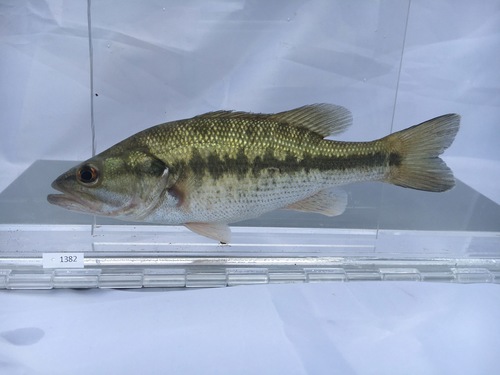
Spotted Bass
The Atlantic bluefin tuna (Thunnus thynnus) is a highly migratory, large pelagic fish known for its incredible speed, size, and commercial value. Prized in cuisine worldwide, it plays a crucial role in marine ecosystems. This article explores the fascinating details of its life, habitat, and the challenges it faces.
5 7 years
Lifespan
25 - 45 cm
Length
Least Concern
Conservation Status
Carnivorous, Insectivorous
Diet
Local Migration
Migration
Appearance Overview
The Atlantic bluefin tuna is renowned for its large, streamlined body, built for speed and endurance.
Color
Dark metallic blue on top with a silvery underside
Fins
Two dorsal fins, the first depressible, and a series of finlets behind the second dorsal and anal fins
Body Shape
Torpedo-shaped, with a conical head
Length
Up to 13 feet (4 meters)
Weight
Up to 2,000 lbs (907 kg)
Diet
Carnivorous, feeding on a variety of fish, squid, crustaceans, and eels.
Feeding Behavior
Highly opportunistic predators, they use their speed and agility to hunt. They often hunt cooperatively, herding and trapping prey.
Social Behavior
Forms large schools, particularly during migration and spawning. Schooling behavior varies with size and age.
Commercial Relevance
Extremely high value, especially in the sushi and sashimi markets, where its fatty flesh is highly prized.
Conservation measures
Subject to international fishing quotas, stock assessments, and management plans. Efforts include satellite tagging and monitoring programs.
Status
Endangered (Varies by population segment; some are considered 'Near Threatened' or 'Least Concern' under regional assessments)
Threats
Overfishing, particularly due to high demand in international markets, illegal and unreported fishing, and bycatch in other fisheries.
Habitat Distribution
Depth Range
0-1,000 meters (typically found in surface waters to 200 meters)
Geographic Range
Western and Eastern Atlantic Ocean, including the Mediterranean Sea
Preferred Environment
Pelagic, temperate, and subtropical waters; highly migratory
Reproduction and Life Cycle
Breeding Habits
Spawns in warm waters, primarily in the Mediterranean Sea and the Gulf of Mexico. Spawning occurs in specific areas with suitable conditions.
Development Stages
Eggs hatch into larvae, which develop rapidly. Juveniles grow quickly, reaching significant size within the first few years of life.
Fecundity
Females can produce up to 30 million eggs per spawning season, releasing them in batches.
Maturity Age
Matures at 4-8 years in the western Atlantic and slightly earlier in the eastern Atlantic.
Faqs about Spotted Bass
How long do Atlantic bluefin tuna live?
Atlantic bluefin tuna can live up to 40 years.
Where can I find Atlantic bluefin tuna?
They are found in the Atlantic Ocean, ranging from Newfoundland to the Gulf of Mexico and the Mediterranean Sea.
Are Atlantic bluefin tuna warm-blooded?
Yes, they are warm-blooded, able to maintain a body temperature higher than the surrounding water, which aids in their swimming speed and endurance.
How fast can an Atlantic bluefin tuna swim?
Atlantic bluefin tuna are among the fastest fish in the ocean, capable of bursts of speed up to 43 mph (70 km/h).
What role do Atlantic bluefin tuna play in the ecosystem?
They are apex predators, feeding on a variety of smaller fish, squid, and crustaceans. This helps regulate the populations of their prey.
Copyright @ Nature Style Limited. All Rights Reserved.
 English
English